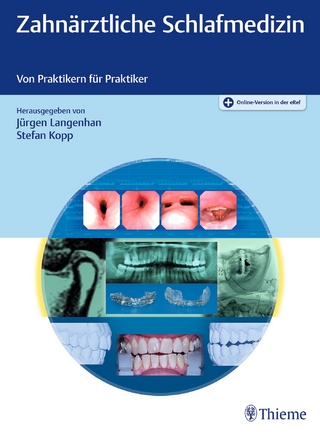
Evaluating and Conducting Research in Audiology
Plural Publishing Inc (Verlag)
978-1-63550-190-2 (ISBN)
Evaluating and Conducting Research in Audiology is the first research methods textbook that is specific to the field of audiology and designed to serve as an academic textbook for audiology graduate students. This text can also be accessible for audiology practitioners who are interested in clinical and applied research. The comprehensive coverage includes materials for multiple courses within audiology degree programs, including research methods, analysis of professional literature, evidence-based practice, and capstone research projects.
The text provides knowledge that is required in evaluating, conducting and disseminating research. The book is separated into three sections: (a) research methods; (b) evidence-based practice; and (c) conducting and disseminating research. Together, these sections provide a detailed coverage of the of research methods that are relevant to conducting research, particularly in the field of Audiology.
Key Features:
*Learning outcomes at the beginning of each chapter
*End of chapter reviews including key points and study questions
*Audiology-specific examples, research methods, and study designs
*"Golden Nugget" boxes throughout the book containing valuable information related to the critical concepts
*In-depth discussion of qualitative research methods, survey research methods, and systematic reviews to motivate students and early career researchers to consider these methodologies in their research
*Classroom-tested book chapters
*Access to a PluralPlus companion website with PowerPoint lecture slides for instructors and study questions and related readings for students
Vinaya Manchaiah, AuD, MBA, PhD, is a Jo Mayo Endowed Professor of Speech and Hearing Sciences at the Department of Speech and Hearing Sciences at Lamar University, Beaumont, Texas. He received is BSc from the All India Institute of Speech and Hearing (AIISH), India, his MSc from the Institute of Sound and Vibration Research (ISVR), University of Southampton, UK, his clinical doctorate (AuD) from Nova Southeastern University, US, and his research doctorate (PhD) from Linkoeping University in Sweden. He also holds Executive MBA and a post-graduate certificate degree in teaching in higher education from Swansea University in UK. He has worked in various clinical, research, teaching, and administrative roles, although his current academic appointment centers predominantly on research. His research focuses on improving the accessibility, affordability, and outcomes of hearing loss and tinnitus by promoting self-management and use of digital technologies. His research has been funded by various organizations including the National Institutes of Health (NIH). He has published more than 130 peer-reviewed manuscripts and four books. He has received numerous awards including the prestigious Bharat Samman Award from the NRI Institute in India in 2017, Erskine fellowship from the University of Canterbury in New Zealand in 2019, and was named a Jerger Future Leader of Audiology by the American Academy of Audiology in 2016.+++++++++++++++++++++++++++++++++++++++++++++++++++++Eldre Beukes, PhD, is the Post-doctoral Researcher and Research Audiologist at the Department of Speech and Hearing Sciences at Lamar University, Beaumont, Texas. She received her BSc in South Africa, her MSc in Audiology from the University of Manchester and her PhD was awarded from Anglia Ruskin University, Cambridge, UK. She is a clinical scientist in Audiology and was awarded the Richard May prize following her training. She received the prestigious Shapiro prize from the British Tinnitus Association for her research three years in a row (between 2017- 2019) and the Hallpike Research Prize in 2019 from the British Association of Audiological Physicians for her work involving the development and running of clinical trials to assess the effectiveness of Internet-based interventions.+++++++++++++++++++++++++++++++++++++++++++++++++Ross J. Roeser, PhD holds the Lois and Howard Wolf Professorship in Pediatric Hearing in the School of Behavioral and Brain Sciences at the University of Texas at Dallas, Dallas, Texas. He is also the Director Emeritus of The University of Texas at Dallas/Callier Center for Communication Disorders in Dallas. He is the founding Editor-in-Chief of Ear and Hearing, is currently the Editor-in-Chief Emeritus of the International Journal of Audiology and has contributed to multiple publications to the audiological literature.
Foreword Jim and Susan Jerger
Foreword by Kevin J Munro, PhD
Preface
Acknowledgements
Reviewers
About the Authors
Section A: Research Methods in Audiology
Chapter 1. The Research Process
Learning Outcomes
The Role of Research within Audiology
Defining Research
Usual Practice
Service Evaluation
Clinical Audit
Overview of the Research Process
Stage 1: Conceiving the Study
Reviewing the Existing Literature
Developing the Scope and Aim of the Study
Identifying and Formulating Research Questions
Creating Hypotheses
Stage 2: Designing the Study
Research Variables
Experimental versus Non-Experimental Research
Quantitative, Qualitative, and Mixed Research Methodologies
Research Compliance
Stage 3: Data Collection
Data Collection Format
Type and Amount of Data Collected
Data Collection Setting
Data Management
Stage 4: Analyzing Data and Drawing Conclusions
Inspecting the Data for Errors
Statistical Analysis
Drawing Conclusions
Stage 5: Dissemination
Translating Research into Clinical Practice
The Research Proposal
The Research Team
Feasibility of Research Project
Outlining the Resources Required
Planning the Time Scale
Considerations for Recruiting and Maintaining Participants
Preregistration of Studies
Key Points
Review Questions
References
Chapter 2. Research Compliance
Learning Outcomes
Research Compliance
Ethical Considerations for Human and Animal Research
Ethical Codes
Then Nuremberg Code
The Declaration of Helsinki
The Belmont Report
Ethical Principles
Good Clinical Practice
Research Principles Outlined by Professional Associations
Data Protection
Confidentiality and Privacy
The European General Data Protection Act (GDPR)
The United States Health Insurance Portability and Accountability Act (HIPAA)
Research with Vulnerable Groups
Informed Consent
Ways of Providing the Necessary Informed Consent
Capacity to Consent
Research Involving Animals
The Ethical Application Process
Applying for Ethical Approval
Ethical Application in Settings with Ethical Review Boards
Ethical Applications in Independent Settings
Research Ethics for International Research
Research Integrity
Research Fudging
Conflict of Interest
Credit for Intellectual Effort
Types of Copyright License
Active Partnerships to Increase Research Quality and Compliance
Patient and Public Involvement in Research
Reporting PPI Involvement in Academic Publications
Key Points
Review Questions
References
Chapter 3. Research Methods
Learning Outcomes
Defining Scientific Methods
Scientific Theory, Law and Models
Scientific Theory
Scientific Law
Scientific Model
History and Philosophy of Science
History of Science
Philosophy of Science
Naive Realism
Anti-realism
Critical Realism
Role of Theory in Research
Deductive versus Inductive Inference
Research Hierarchy: Methodology, Method, and Design
Types of Research
Empirical versus Non-empirical Research
Basic versus Applied Research
Animal versus Human Research
Descriptive versus Analytical Research
Exploratory versus Confirmatory Research
Feasibility versus Pilot Studies
Prospective versus Retrospective Research
Quantitative versus Qualitative Research
Observational versus Experimental Research
Laboratory versus Field Research
Cross-sectional versus Longitudinal Research
Common Ways of Categorizing Research Studies
Research Methodology
Quantitative Research
Variable
Qualitative Research
Difference and Opinion Between Quantitative and Qualitative Research
Mixed-Methods Research
Common Research Strategies Used in Audiology
Key Points
Review Questions
References
Chapter 4. Research Design
Learning Outcomes
Introduction
Research Designs
Cross-sectional Design
Repeated Cross-sectional Design
Cohort Design
Case-Control Design
Experimental Design
Pre-, Quasi-, and True Experimental Designs
A Randomized Controlled Trial
Parallel-group versus Cross-over Experimental Designs
Treatment Efficacy and Effectiveness Trials
Considerations When Choosing Research Designs
Criteria for Quality in Quantitative Research
Validity
Reliability
Generalizability
Evaluating Clinical Research
Quality Analysis of Studies and Level of Evidence
Nature of Clinical Data
Clinical Practice Guidelines
Rigor and Reproducibility in Scientific Research
The Reproducibility Crisis in Research
Best Evidence versus Best Available Evidence
Minimizing Bias in Research
Key Points
Review Questions
References
Chapter 5. Variables, Sampling and Sample Size
Learning Outcomes
Introduction
Variables in Empirical Research
Types of Variables
Independent Variable
Dependent Variable
Extraneous Variable
Confounding Variable
Demographic Variable
Environmental Variable
Examples of Different Variables in a Study
Variables During Data Collection and Analysis
Levels of Measurement
Populations and Samples
Parameters versus Statistics
Sample Characteristics
Sampling Methods
Probability Sampling
Simple Random Sampling
Systematic Random Sampling
Stratified Random Sampling
Cluster Sampling
Non-probability Sampling
Convenience Sampling
Snowball Sampling
Consecutive Sampling
Quota Sampling
Self-selection Sampling
Purposive Sampling
Theoretical Sampling
Challenges in Implementing Probability Sampling Methods
Sampling Bias
Sample Size
Sampling Error
Power Analysis
Sample Size Estimation
Post-hoc Power Analysis
Challenges in Recruiting Study Participants
Key Points
Review Questions
References
Chapter 6. Analyzing and Interpreting Quantitative Data
Learning Outcomes
Introduction
An Overview of Analyzing and Interpreting Quantitative Data
Preparing Data for Analysis
Error Checking and Outliers
Missing Data
Describing the Data
Measures of Central Tendency
Mean
Median
Mode
Measures of Variability
Range
Variance
Standard Deviation
Z-Scores
Standard Error
Quartiles
Describing the Distribution
Normal Distribution
Skewness and Kurtosis
Central Limit Theorem
Data Transformation
Selecting Appropriate Statistical Tests
Assumptions Required for Parametric Testing
Assumptions of Normality
Homogeneity of Variance
Considerations When Using Parametric Statistics
Considerations When Using Non-Parametric Statistics
Quantitative Data Analysis
Hypothesis Testing
Specifying the Hypotheses
Probability Values (P-value)
One- or Two-Tailed Tests
Degrees of Freedom
Alternative or Complementary Approaches to Significance Testing
Effect Size Calculations
Confidence Interval and Margin of Error
Clinical Significance
Bayesian Analysis
Testing Differences Between Two Means
T-test
Types of t-tests
Comparing Groups
Analysis of Variance
Main Effects and Interaction Effects
Types of Analysis of Variance
Analysis of Covariance
Post-hoc Testing
Examining Relationships Between Variables
Correlation Analysis
The Pearson Product-Moment Correlation Coefficient
Predicting and Assessing the Strength of the Relationship Between Variables
Regression Analysis
Non-Parametric Regression Models
Grouping Variables
Factor Analysis
Cluster Analysis
Analyzing the Performance of Diagnostic Tests
Reporting Statistical Test Results
Reporting the Outcome of Statistical Analysis
Visual Representation of the Data
Common Pitfalls When Conducting and Reporting Statistics
Interpreting Statistical Findings
Key Points
Review Questions
References
Chapter 7. Qualitative Research Methods
Learning Outcomes
Scope and Context of Qualitative Research
Qualitative Research Traditions
Grounded Theory
Phenomenology
Ethnography
Ethnomethodology
Action Research
Narrative Research
Case Study
Sampling and Recruiting Participants
Sampling Methods
Convenience Sampling
Snowball Sampling
Purposive Sampling
Maximum Variation Sampling
Theoretical Sampling
Determining Sampling Method
Sampling Adequacy
Other Considerations when Recruiting Participants
Data Collection Methods and Settings
Data Collection Methods
Interviews
Focus Groups
Questionnaires
Observations
Document Analysis
Employing Multiple Data Collection Methods
Data Collection Settings
Checking Accuracy
Data Analysis Methods
Two Main Approaches to Qualitative Data Analysis
Data Analysis Steps
Transcribing Data
Becoming Familiar with the Data
Data Organization
Generating Codes
Data Interpretation and Pattern Identification
Tying Field Data to Research Objective(s) and Drawing Verifiable Conclusions
Common Qualitative Data Analysis Methods
Descriptive Analysis
Content Analysis
Thematic Analysis
Constant Comparative Method
Conversation Analysis
Discourse Analysis
Interpretive Phenomenological Analysis
Data Saturation and Trustworthiness
Use of Qualitative Data Analysis Software Programs
Role of the Researcher
Emic or Etic Research Perspectives
Theoretical Orientation and Methodological Choices
Training and Experience
Disciplined Subjectivity
Safeguarding Participant Anonymity
Acknowledging the Role of a Researcher
Reporting Qualitative Research
Thick Description of the Data
Interpretive Themes
Anonymity of Participants
Visual Presentation of the Data
Scientific Rigor in Qualitative Research
Reflexivity
Validity
Credibility
Dependability
Confirmability and Audit Trail
Transferability
Key Points
Review Questions
References
Chapter 8. Mixed-Methods Research
Learning Outcomes
Introduction
Overview of Mixed-Methods Research
Characteristics of Mixed-Method Research
Comparing Qualitative, Quantitative and Mixed-Methods Research
Advantages and Challenges of Mixed-Method Research
Conducting Mixed Methods Research
Identifying the Rationale for MMR
Selecting the Study Design within MMR
Identifying the Sampling Strategy
Data Collection
Data Analysis
Data Interferences
Examples of Mixed Method Studies in Audiology
Big Data Research Using Mixed-Methods
Evaluating Mixed-Method Research
Key Points
Review Questions
References
Chapter 9. Survey Research
Learning Outcomes
Defining Survey Research
Advantages and Limitations of Survey Research
Purposes of Surveys
Gathering Opinions, Beliefs, and Feelings
Diagnostic Measure
Outcome Measure
Epidemiological Studies
Multi-purpose Surveys
Study Designs in Survey Research
Cross-sectional Surveys
Repeated Cross-sectional Surveys
Panel Surveys
Survey Experiments
Sampling and Participant Recruitment
Sampling Methods
Sample Size Adequacy
Response Rate
Data Collection Methods
Types of Surveys
Questionnaires
Interviews
Mixed Mode Surveys
Survey Administration Methods
Written Survey
Oral Survey
Paper and Pencil versus Electronic Survey
First-hand versus Third-party Administration
Types of Questions
Open-ended Questions
Closed-ended Questions
Mixture of Open-ended and Closed-ended Questions
Response Options
Rating versus Ranking
Open Response Formats
Dichotomous Responses
Likert Response Scales
Visual Analogue Scale (VAS)
Missing Data and Erroneous Data
The Importance of Anonymity
Considerations for Designing, Adapting, Validating or Choosing a Questionnaire
Designing a Questionnaire
Conceptual Clarity
Comprehensibility
Wording of Questions
Response Formats and Scoring
Question Sequence
Administration Format
Keep Analysis in Mind
Checking Survey Quality
Pre-testing
Translation and Adaptation of Questionnaires
Validating a Questionnaire
Validity
Reliability
Responsiveness
Interpretability
Floor and Ceiling Effect
Choosing a Questionnaire
Core Outcome Set (COS)
Approaches to Survey Data Analyses
Preparing Data for the Analysis
Types of Data
Data Structure
Choosing a Data Analysis Method
Analysis of Likert-scale Responses
Data Interpretation
Describing Phenomenon
Correlation versus Causality
Reported Behavior versus Actual Behavior
Adequacy of Psychometric Properties
Sources of Bias in Survey Research
Key Points
Review Questions
References
Section B. Evidence-Based Practice
Chapter 10. Evidence-Based Practice
Learning Outcomes
Healthcare Decision Making
Types of Knowledge
Traditional Knowledge
Authority Knowledge
Personal Knowledge
Trial and Error Knowledge
Research-Based Knowledge
Hierarchy of Knowledge Types
Evidence-Based Practice (EBP)
A Brief History of EBP
Definitions
Benefits and Risks of EBP
EBP Steps
Step 1 - Developing and Defining Clinical Questions
Step 2 - Search for the Best Available Research Evidence
Step 3 -Synthesize the Evidence
Step 4 - Implement the Evidence
Step 5 - Evaluate the Outcomes
Implementation Issues for EBP in Clinical Practice
Clinical Practice Guidelines (CPGs)
Acceptance and Adherence Issues
Examples of Challenges for EBP Implementation
Example 1 - Lack of Organizational Support
Example 2 - Healthcare Service Reimbursement
Example 3 - Overabundance of Available Evidence
Example 4 - Misuse of the Non-Peer Reviewed Evidence
Common Myths and Misconceptions about EBP
Evaluating Research for EBP
The Future of EBP
Key Points
Review Questions
References
Chapter 11. Systematic Literature Review and Meta-analysis
Learning Outcomes
Research Reviews in Clinical Practice
Types of Reviews
Narrative (or Descriptive) Review
Scoping Review
Systematic Review
Review of Reviews
Systematic Review Process
Requirements for a Systematic Review
Identifying a Research Area
Establishing the Rationale for Reviews
Formulating Research Questions
Searching and Appraising Previous Reviews
Critical Appraisal Skills Program (CASP) Checklist for Systematic Reviews
Assessing Methodological Quality of Systematic Review (AMSTER)
Risk of Bias Assessment Tool for Systematic Reviews (ROBIS)
Scoping Search
Inclusion and Exclusion Criteria
Review Registration
Developing the Search Strategy
Information Sources
Keyword Selection
Performing the Search and Selecting Appropriate Papers
Referencing Management
Data Extraction
Outcomes and Prioritization
Biases
Quality Assessment
Assessment of Methodological Quality
Assessment of Risk of Bias
Determining Level of Evidence
Data Synthesis
Descriptive Synthesis
Narrative Synthesis
Thematic Synthesis
Quantitative Synthesis (Meta-analysis)
Reporting the Review Outcomes
Performing a Meta-analysis
Use of Software in Meta-analysis
Criteria for Performing a Quantitative Synthesis
Assessing Appropriateness of Doing a Meta-analysis
Principle 1: Power Analysis
Principle 2: Examination of Confidence Interval Width
Principle 3: Assessment of Heterogeneity
Publication Bias
Summary Measures
Statistical Models
Odds or Risk Ratios
Estimating Effect Sizes
Standardization and Weighting Studies
Subgroup Analysis
Sensitivity Analysis
Meta-regression
Reporting Guidelines for Systematic Reviews and Meta-analysis
Key Points
Review Questions
References
Section C. Conducting and Disseminating Research
Chapter 12. Student-Led Research Projects
Learning Outcomes
Importance of Student-Led Research Projects
Benefits of Student-Lead Research
Elements of Student-Led Research
Selecting the Topic
Selecting a Mentor and Committee Members
Conducting a Literature Review
Access to Full-Text
Inter-Library Loan
Developing the Research Proposal
Identifying the Scope of the Research
Defining the Research Questions
Writing the Research Proposal
Gaining the Necessary Approvals
Involving Service Users in Research
Gathering the Research Data
Data Analysis and Drawing Appropriate Conclusions
Writing and Reporting the Research Findings
Effective Planning of the Research
Creating a Realistic Research Plan
Dealing with Ongoing Challenges
Time Management
Disseminating the Research Outcomes
Examples of Published Student-Led Projects in Audiology
Key Points
Review Questions
References
Chapter 13. Disseminating Research Findings
Learning Outcomes
Importance of Scientific Findings-Dissemination
Planning Dissemination of Scientific Findings
Presenting Research Findings at Professional Conferences
Scientific Publications
Scientific Truth
Peer-Reviewed Publications
Predatory "Peer Reviewed" Publications
Publishing Negative Results
Non-Peer Reviewed Publications
Important Considerations When Choosing the Journal
Scope of the Journal
Target Audience
Manuscript Types and Word Limits
Impact Factor
Conflict of Interest
Copyright Assignment
Open Access
Publication Charges
Tips for Successful Publishing
Invest Enough Time in the Process
Choose the Most Appropriate Journal
Follow the Journal Submission Guidelines
Use Standard Guidelines for Scientific Reporting
Importance of the Cover Letter
Components of the Manuscript
More on the Abstract
Referencing
Professional Copy Editing
Authorship Order and Honorary Authorship
Addressing Reviewers' Concerns
Strategies to Enhance Reach and Impact of Research
Reviewing Others Research Work
Benefits of Peer-Reviewing Others Work
How to Conduct Peer-Review of Scientific Work
Key Points
Review Questions
References
Index
| Erscheinungsdatum | 10.05.2021 |
|---|---|
| Zusatzinfo | 44 figures and 78 tables |
| Verlagsort | San Diego |
| Sprache | englisch |
| Maße | 178 x 254 mm |
| Themenwelt | Medizin / Pharmazie ► Medizinische Fachgebiete ► HNO-Heilkunde |
| ISBN-10 | 1-63550-190-3 / 1635501903 |
| ISBN-13 | 978-1-63550-190-2 / 9781635501902 |
| Zustand | Neuware |
| Haben Sie eine Frage zum Produkt? |
aus dem Bereich


